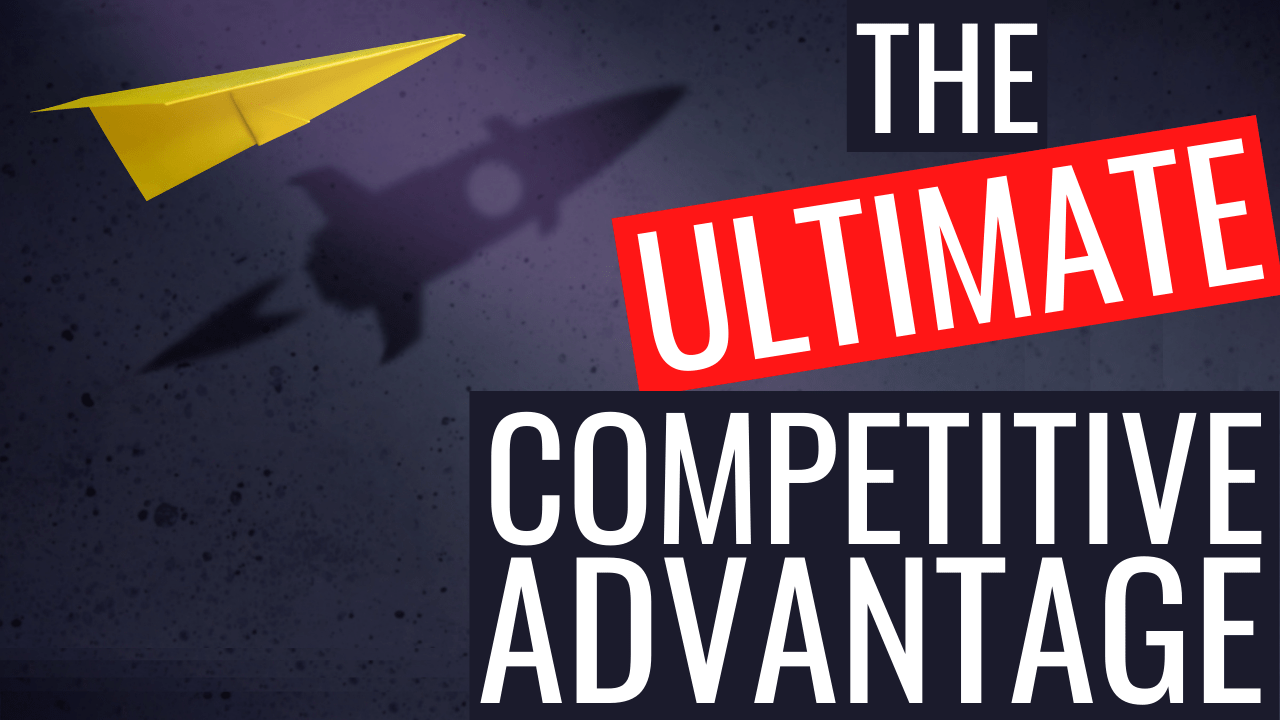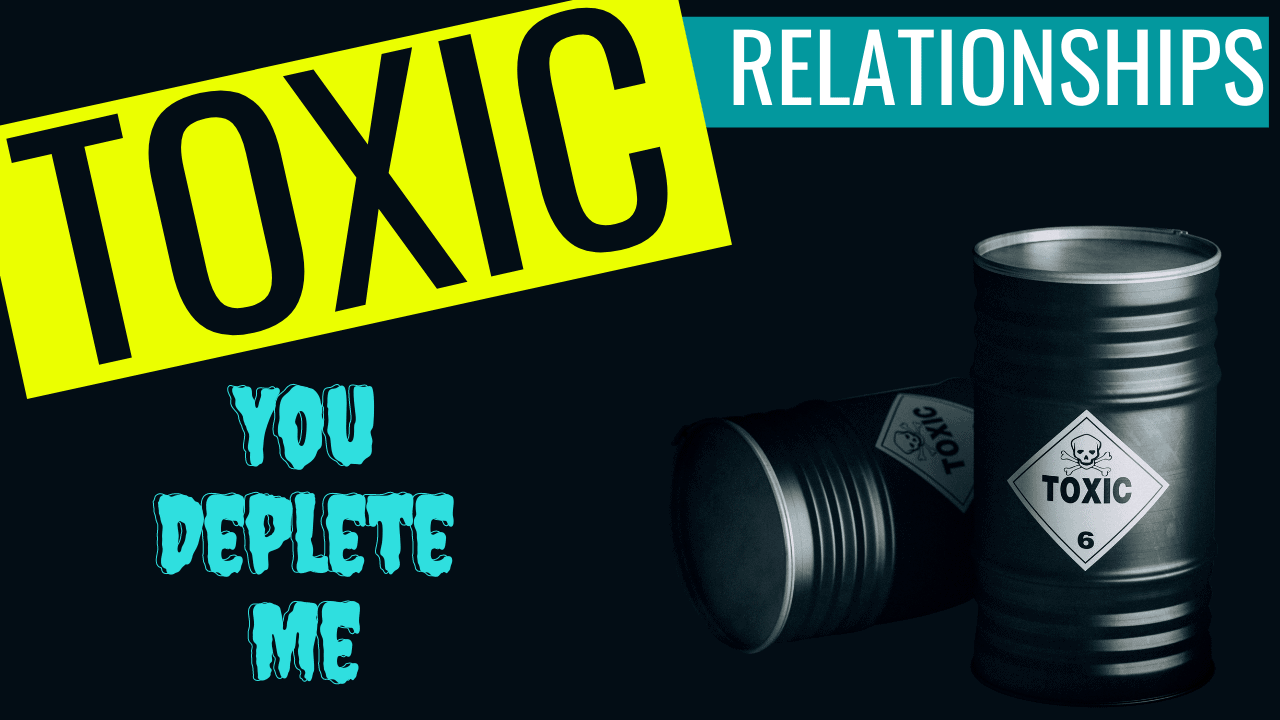Today, trust is more than a highly esteemed human value. It is one of the most powerful forces available to us in business and the ultimate competitive advantage. All around the globe, humanity is in search of trust. The less we find – in our personal interactions, in media, in government, in commerce – the more precious it becomes. Superior trust in products or services creates powerful perceptive beliefs in people’s minds that are difficult to challenge – the most trusted player wins.
All companies are in the business of trust. We purchase products and services because we trust them to achieve an outcome for us. Any business owes its existence to this fundamental reality. As Warren Buffett allegedly put it, “Trust is like the air we breathe. When it’s present, nobody really notices. But if it’s absent, everybody notices.”
Technology continues to evolve rapidly. We’re generating more and more data, particularly about human beings. With this comes a variety of risks, many of which are well documented. There’s also a proliferation of information, both evidence and opinion-based, that everyday people have access to. Knowing who to trust and why has become increasingly tough. As technology generates more transparency, consumers hold businesses to ever higher standards, with no room for pretence or deceit. Being proactively trustworthy requires you to watch out for your customer’s interest, even when your customer isn’t paying attention.
“For every good reason there is to lie, there is a better reason to tell the truth.”
– Bo Bennett
Maximising Value by Maximising Trust
Whether we are buying food or a new car, our trust in an expected gain drives economic activity. Without this, value creation is impossible. People buy from brands they trust, and employees want to work for companies with strong values. As with personal relationships, trust is integral to the foundation of every successful business. This is the basis of a values-based economy, where people expect businesses and organisations to do the right thing because it is the right thing to do.
Unfortunately, most existing definitions of trust fail to highlight the pivotal involvement of trust in the marketplace and its paramount importance to the global economy. The Trust Economy (aka The Connection Economy) challenges the status quo in which trust is a barely understood, and often overlooked concept. Trust is a crucial economic asset because all other economic or social interactions derive their value from it.
This explicitly associates trust with value and acknowledges the unique role of trust as the glue between human value exchanges of all kinds. The clarity offered by this definition is compelling companies to view building and maintaining trust as the core objective of all management efforts. The more trusted an organisation, the harder it is to outcompete.
“Trust is the glue of life. It’s the most essential ingredient in effective communication. It’s the foundational principle that holds all relationships.”
– Stephen Covey
Organisational Trust Strategy
Putting in place an organisational trust strategy is a great way to increase both trust and a competitive edge in tandem. It involves analysing all existing business activities of the organisation in terms of whether they build or destroy trust. With this information you can reengineer focus on areas where the organisation excels in trust and fix areas where it has eroded. This universal, highly effective approach to creating trust-based differentiation can maximise the value realised across any business.
The Trust Economy Model is a 6-step methodology for how this is best achieved by offering a simplified, organised, and sequential approach to trust building efforts. It is designed as a guiding framework and centrepiece of a trust strategy, informing the way trust is created, measured, and recovered.
“Trust is the lubrication that makes it possible for organisations to work.”
– Warren Bennis
The Trust Economy Model
The Trust Economy Model aims to maximise trust in any situation or context, with any type of stakeholder, across any medium of interaction.
Perception
We are told that first impressions count. Perception matters, and in the context of trust building, it serves as a critical gateway for trusted relationships. Perception is becoming less about delivering a message and more about effective ways of disseminating truth to the right people. In the information age the reality (the good, the bad and the ugly) can no longer be hidden effectively. The consequences of building perceptions that are not grounded in an organisation’s reality have a greater potential to harm trust building than ever before. Companies looking to leverage perception in their favour must focus on being excellent and standing out in ways that matter to their clientele.
Temptation
Perception may be powerful in preparing for trust building, but it does not necessarily carry a call to action. This usually takes the form of a tempting “invitation,” a gesture we extend to invite trust. In order for something to be desirable for us, it must scratch an itch. The underlying need it serves can be basic (a bottle of water in the desert to quench your thirst) or high-order (a luxury island resort provides sunshine, peace and quiet for relaxation). What qualifies a consumer desire is our trust that we need and want the object, service, or person of our choosing.
Connection
Having offered someone a temptation, the next key element is empathy. With the overwhelming variety of choices we face today, companies that invest in really understanding human needs cut through the clutter. Speaking and acting in kind and personable ways, as well as aligning to the interests and values of your customers, are some of many important activities falling into the connection stage.
Validation
Trust building is a social contract, and just like any other contract it requires some form of validation to materialise. While validation approaches vary in scope and intent, they are all important stages that transform a trust building exploration into a relationship. This relationship is the basis for initial and future dealings with each other. Once validation has affirmed the critical assumptions, a new status quo is created. Repeat and habitual engagement result in lasting value being experienced both ways.
Affiliation
Highly trusted people and companies thrive on unsolicited referrals to grow their audience. Advocacy requires us to attach ourselves, with our beliefs and values, to another person, company, or idea. Like any form of association, this carries a risk, and we normally want to make sure we associate with the right things and people. If you speak highly of something or someone, you believe what they do and say matters, so much so that you spread the word about it. Advocacy has altruistic motives (we recommend something because we genuinely believe it is going to enrich someone else’s life). It builds tangible economic value and trust.
Due to the spillover effect of advocacy, we arrive once again at the first stage of The Trust Economy Model: Perception. Trust building has no defined beginning or end. Rather, it is a continuous process. By helping to increase trust, irrespective of context, The Trust Model can be applied to create an engine of progress and innovation that maximises human and business value.
People know The Trust Model is working when trust is more important than any personality, no matter how charismatic, in the organisational culture. In organisations where employees trust the leadership team (and vice-versa) a culture grows up that dramatically enhances individual and organisational productivity. The competitive advantage then becomes both self-sustaining and self-renewing. It is alive in every moment, active in the spirit of the people who are doing and managing the work.
“People that have trust issues only need to look in the mirror. There they will meet the one person that will betray them the most.”
— Shannon L. Alder
That Four Letter F-Word
People have a natural inclination to give. We have a need, even a hunger, to be part of something bigger than ourselves, especially when that something bigger reflects and amplifies our inherent values. Opposing the urge to contribute and participate is fear – fear of rejection, failure, loss, retribution, and embarrassment. Sometimes we hang in the balance, afraid to go this way or that, standing at the end of a diving board not wanting to jump, not wanting to back down. Trust tips this balance, especially when the leadership models trust. People feel reinforced, validated, and supported. They are more likely to plunge in and put more of themselves into their work, and far more likely to be creative and generous with their talents. An organisational culture grows up that makes people want to support and contribute to the company.
When trust breaks down between individuals or teams, relationships suffer — poor communication, hiding, defensive posturing, blame and other forms of aggressive and passive-aggressive behaviours ensue. Trust is initiated by understanding, respecting and adhering to commitments, agreements and expectations. When it’s perceived that commitments, agreements or expectations are not being kept, we lose trust in the other person’s ability to follow through.
In more extreme cases, we take it personally as a show of disrespect for our relationship, level of authority and dedication to our common cause. As a result, our communication is affected, and we become punitive or overly cautious in the relationship. We might establish workarounds that bypass the person involved to get our goals accomplished. At this point, the problem is not only an execution breakdown but also a relationship breakdown.
If you solve the breakdown at the relationship level — looking at different styles, asking for forgiveness, enhancing the level of respect we have for each other — but don’t address the misunderstanding or lack of alignment on commitments, agreements or expectations, the breakdown in trust will resurface.
“He who does not trust enough, will not be trusted.”
– Lao Tzu
9 Signs of a Fear-Based Workplace
Fear-based company cultures leave you feeling insecure and unsure. Fear makes us contract, and at work it can be a huge de-motivator. Is your workplace toxic?
1. Fear Focused
Employees focus more of their time and energy on keeping their jobs than they do on how to best serve the customer. Competition is rife at the expense of productivity.
2. Leading with Fear
Supervisors point out mistakes publicly rather than addressing them one-on-one. Frequent threats are bandied about, such as “If you want to keep your job, you’ll do what I say.”
3. Rule Overload
When there are too many rules, it makes it difficult for employees to feel like management trusts them, creating an atmosphere of insecurity and fear.
4. Escalating Problems
When co-workers constantly bring interpersonal conflicts up with the boss rather than solving problems directly, it creates an atmosphere of mistrust. You fear that the boss will think you’re a problem or that someone will “tell on you” so you escalate issues rather than handling things maturely.
5. Infrequent Feedback
If you get so little feedback that you have no idea how well you’re doing (or not), you might constantly second guess your decisions. Knowing how you’re doing consistently helps you know where you stand and do your job with confidence.
6. Unclear Roles
Consistently asking “who do I talk to about that?” usually indicates that you’re not clear about others’ roles and responsibilities, creating doubt instead of certainty. Being clear on everyone’s roles helps improve efficiency and puts your mind at ease.
7. The Sky Is Falling
When the culture encourages people to focus more on problems than solutions, it causes people to feel panicky and stressed most of the time. Security comes when everyone focuses on how to solve problems instead of dwelling on them.
8. Kept in The Dark
When there’s open communication in the workplace, it builds trust and eases anxiety. But if your supervisors or co-workers don’t regularly share information that you need to do your job, you’re constantly guessing and insecurity increases.
9. Atmosphere of Mistrust
A supportive atmosphere at work means stronger unity and co-workers pulling for one another. But if you’re in a fear-based culture, co-workers tend to exchange a lot of rumours and share gossip, causing mistrust and competition.
“The supreme quality of leadership is unquestionably integrity.”
– Dwight D. Eisenhower
Risky Business
A lack of trust is always a business risk, especially so in the backdrop of the pandemic. It’s more important than ever to safeguard your organisation from setbacks by cultivating a culture of trust from the inside out. Trust matters because it is a prerequisite for collaboration. To trust means to make oneself vulnerable to the actions of others because we believe in their good intentions and their ability to turn those intentions into outcomes.
At its core, trust creates psychological safety. Your employees won’t be scared to be vulnerable; they’ll show up to work as their authentic, genuine selves. The valuable emotional and intellectual energy they would have spent fretting about, say, whether or not they’ll look bad making a suggestion about a project’s scope will be freed up. Instead, they’ll be able to focus on more important matters that will grow your business, such as brainstorming a new product line or fixing a customer retention issue.
By extension, once people feel psychologically safe, they’ll be more comfortable with challenging the status quo, pointing out errors and flaws before you go public with a new product or idea. It could be a matter of life or death. Consider this: what if Boeing engineers had felt like it was OK to speak up about the 737 Max aircraft model? Countless deaths could have been avoided.
“There are some who do not have the ability to hide. For our hearts will not fit under a rock.”
― Tom Althouse
Sunlight is the Best Disinfectant
Having a high degree of trust at work creates transparency. People are able to hold themselves and each other accountable. They own their mistakes and work towards bettering themselves, instead of just emotionally checking out. This growth mindset approach is a hallmark of successful sports teams. Coaches will show players a recording of the game and break down exactly what went wrong. In turn, players have a heightened sense of accountability and personal responsibility for their performance on the field.
Ultimately, when it comes to trust, the numbers don’t lie. According to the Harvard Business Review, employees at companies with higher degrees of trust experience 74% less negative stress, 106% more energy at work, 50% higher productivity, 13% fewer sick days, 76% more engagement, 29% more satisfaction with their lives and 40% less burnout.
Throughout the pandemic, many companies have shifted to remote work and are navigating other business challenges, such as declining revenue. We’ve seen how critical it is to have a culture of trust. Companies with higher degrees of trust have had a much easier time adapting to these changes because employees feel empowered to speak up. When there’s a jolt in the system, your ability to respond quickly in creative ways will make or break you.
“Don’t be afraid to show your vulnerability. Be transparent with your team, even when the truth may be unpopular or inconvenient.”
– Bill George
Two Types of Trust
Trust is an emotional brain state, not just an expectation of behaviour. A simple way to think about trust in the workplace is this:
- Practical
This type of trust can be earned by being a steadfast worker; you meet commitments, show up on time, and do what you say you’ll do. People rely on your competence and dependability. They trust you to get the job done. This trust is fundamental. If you don’t have it, your team is facing some big problems. It can lead to a lack of communication, knowledge hoarding, micro-management, duplication of work, missed deadlines, and terrible productivity.
- Emotional
This type of trust is next level. And it takes teamwork in the workplace to the next level too! It’s when people trust that you’re on their side. They know you’ll treat them kindly and respectfully, that you won’t judge them for their setbacks, and they’re comfortable telling you their honest thoughts, feelings, and ideas. This type of trust goes beyond hard work and respecting other people’s time; it requires a certain level of emotional intelligence.
“Be impeccable with your word. Speak with integrity. Say only what you mean.”
– Miguel Ruiz
5 Ways You Can Build Trust
Here’s how you can help your company develop and maintain trust.
1. Be a Trustworthy Leader
Be the type of person you want to do business with or work for. Working from a place of integrity, transparency and expertise builds trust. Displaying good character can take you a long way because when your customers, employees and colleagues trust you, you can help remove potential doubt and barriers.
2. Shape Values and Trust
As you proactively shape your culture, values and ethos, share them with all stakeholders. Do you have a thorough understanding of what your values are? What are the things (excellence, quality, integrity) that your company stands for? Make your values explicit, and share them with customers and employees. People want to know what you stand for, so make sure you’re living up to what you profess by taking opportunities to display your values — before you need to prove yourself when something goes wrong.
3. Embed Values and Trust
Your values need to be more than just words that you share on a website, social media or other promotional avenues; people will judge you according to what you say you stand for and will use your values as a measure of trust.
4. Develop your Trust Muscle
Show people who you genuinely care by keeping your word. Simply do what you say you will do. Deliver on time and provide exceptional service. Go beyond expectations by apologising quickly if mistakes are made or supporting a good cause, such as a charity or local school. Within a cycle of continuous improvement, taking time to review and audit trust helps to nurture it, especially when you share the process and outcomes with stakeholders.
5. Create a Trust Loop
Promoting an open culture that values customer or staff voices, enables you to gauge where you are at with regard to trust and also helps people decide if they can trust you. Teams might choose to have regular “airing and sharing” sessions. Those sessions could be followed up with “you said, we did” responses from the leaders in the organisation. This gives leaders an opportunity to learn and fix problems on a regular basis. Staff feel listened to and respected, thus forming a loop of trust.
“If you cannot trust yourself, you cannot even trust your mistrust of yourself – so that without this underlying trust in the whole system of nature you are simply paralysed”
— Alan Watts
Control is Out. Empowerment and Trust are In.
As rewards increasingly flow to those who are able to build the trust-based organisation of the future, business leaders will need to heed the trust message or risk ending up with an organisation that’s neither as productive nor as effective as competitors’. If we want people to take initiative on behalf of the customers they serve, think disruptively and bring creative ideas to the table, we as leaders need to empower them, support them and then get out of their way.
A different leadership style combined with different communication tactics leads to a different approach to innovation. The world is moving too quickly for any company to rely on traditional methods of top-down, directed innovation. Across industries, the most nimble companies increasingly employ bottom-up, agile approaches.
The issue of trust that we are attuned to feeds into a deeper shift underway today, a redefining of the role of business in society. In the Edelman Trust Barometer study, roughly three-quarters of employees say that it is critically important for their CEOs to take the lead on change – responding to challenges in industry and society – rather than waiting for government to impose it. The era of shareholder domination in the business world is giving way to a broader definition of success and a call to action: Build the trust-based organisation. Companies can answer that call by evolving their systems of leadership, communication and innovation.
“Your trustworthiness quotient depends on your transparency ratio.”
— Shubha Vilas






